
The BIO5 Institute embodies the interdisciplinary spirit prevailing at the University of Arizona on a grand scale. BIO5 brings together hundreds of scientists from across five disciplines - agriculture, engineering, medicine, pharmacy, and basic science - to deliver creative solutions to health and environmental challenges. Read on to learn more about BIO5's important discoveries and innovations from the last 20 years.
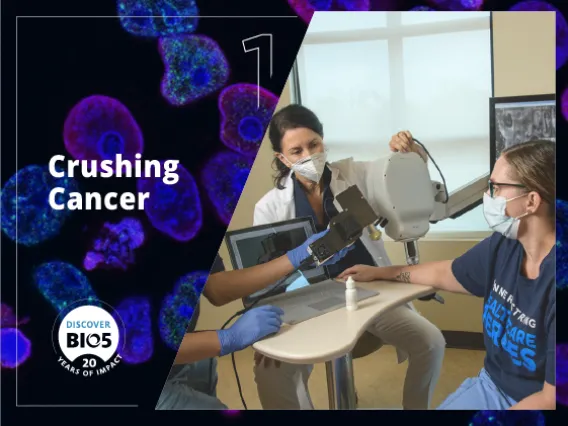
Cancer directly affects almost every person in the U.S., so BIO5 researchers are advancing better prevention, diagnostic, and treatment approaches. Clara Curiel-Lewandrawski and Dongkyun Kang’s novel imaging device better enables doctors to quickly and safely diagnose many skin cancers and monitor responses to treatment without a biopsy. Rachna Shroff uses genomic profiling of tumors to tackle hard-to-treat gastrointestinal cancers. Donato Romagnolo, Ornella Selmin, Cynthia Thomson, and Janet Funk are identifying how different foods and supplements may prevent breast cancer or lessen disease aggressiveness.
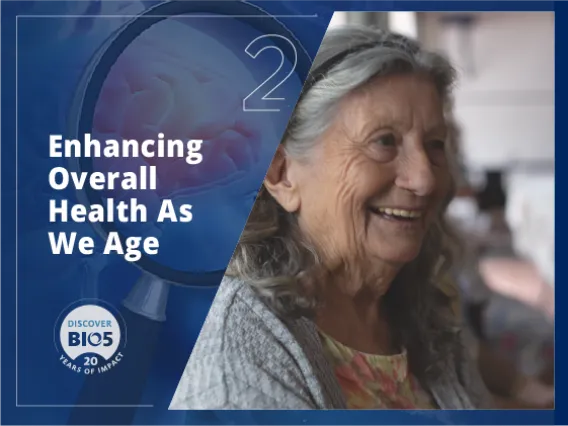
Understanding the biological mechanisms behind normal versus disease-laden aging is essential to achieving a lifetime ofgood health. Janko Nikolich-Žugich studies how to rejuvenate the immune system to defend against infection and inflammation, promoting long-lasting immunity from disease. Carol Barnes, Roberta Diaz Brinton, Meredith Hay, and Lee Ryan lead the Precision Aging Network, collaborating to develop more effective and individualized treatments and individually-targeted interventions to transform the way we think about the aging brain. George Sutphin is testing drug combinations that will extend healthy lifespan.
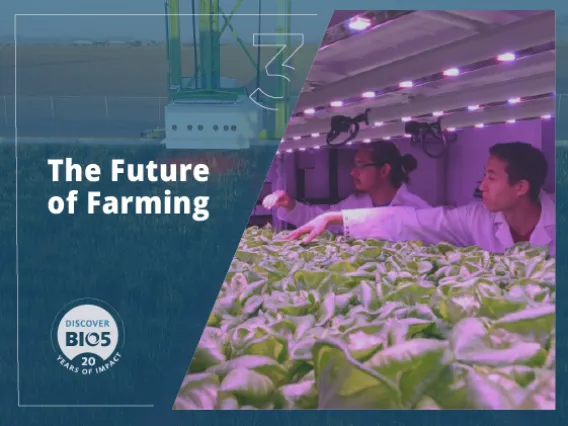
BIO5 researchers are developing novel solutions that enable the production of more food with less use of resources. Using the framework of sustainable agriculture, Joel Cuello is looking up for answers in the form of vertical farming. Rebecca Mosher, Judith Brown, and Nirav Merchant are creating digital tools to capture data that show how plants interact with their environments and will inform new techniques for breeding crops to meet the challenges of a changing global climate.

Over the past 20 years, $50+M has been invested in building specialized UArizona facilities and critical expertise that researchers were able to leverage in a robust response to the complex fight against COVID-19. Additionally, in April 2020, thirteen interdisciplinary BIO5 teams were awarded a collective $500K in rapid seed grants to quick-start projects studying transmission, treatment, and prevention strategies.

BIO5 members embrace an entrepreneurial culture where scientific discovery leads to innovation. This translates into technology and companies focused on impacting human health and well-being. Steve Goldman, co-founder of Avery Therapeutics, Inc, is addressing heart failure with the invention of the MyCardia™ engineered beating heart technology. Klearchos Papas, co-founder of Procyon Technologies, is developing oxygen enabled encapsulated cell therapy technology with a focus on providing a functional cure for people with type 1 diabetes without the need for drugs that suppress the immune system.

Phillip Gutruf is engineering personalized 3D-print wireless wearables that never need a charge which could mean massive improvements in the monitoring and treatment of diseases, the testing of new drugs, and the ability to track personal health. Janet Roveda is developing devices that will allow clinicians to gather patient data remotely and provide "care in place" so patients don't need to leave their homes. Judith Su’s technology detects ultra-low levels of disease particles, performance-enhancing drugs, contaminants, and "anything worth sensing."
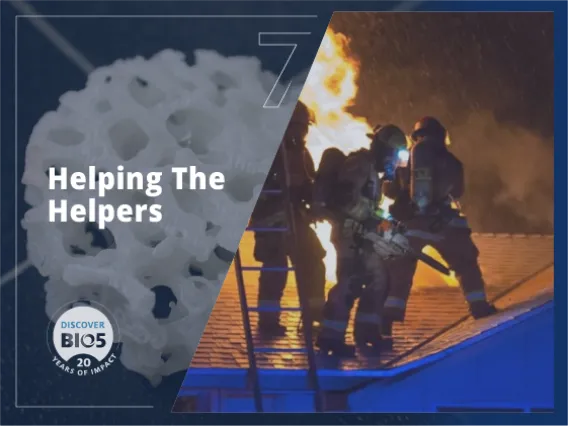
Firefighters and those in the military dedicate their lives to protecting and serving our community, state, and nation, and BIO5 researchers are working to help those who help us. Since cancer is a leading cause of death among firefighters because of daily exposure to carcinogens, Jeff Burgess, Shane Snyder, and Julia Fisher are working to reduce cancer exposure rates among first responders. John Szivek is studying how to use a combination of 3D printing and adult stem cells to heal devastating bone injuries that affect military personnel.
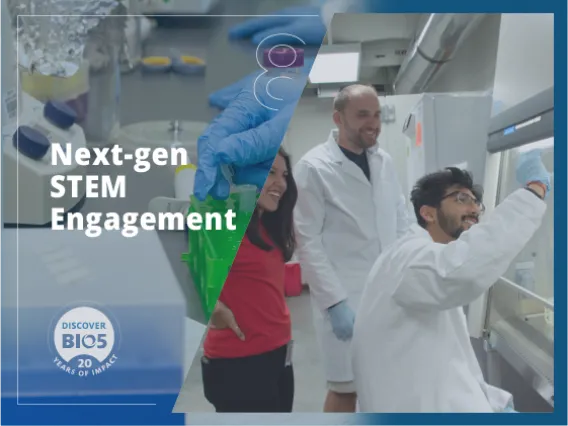
BIO5 leads annual training and outreach programs to promote experiential learning and STEM proficiency, contributing to Arizona’s economy through workforce development. We impact students through programs like the KEYS Research Internship, BIO5 Ambassadors, and the Postdoctoral Fellowship, and engage the community in public offerings like Science City – Arizona’s largest STEM event, Precision Wellness, Ignites Science, and Women in STEM series, and our Science Talks podcast/video series.
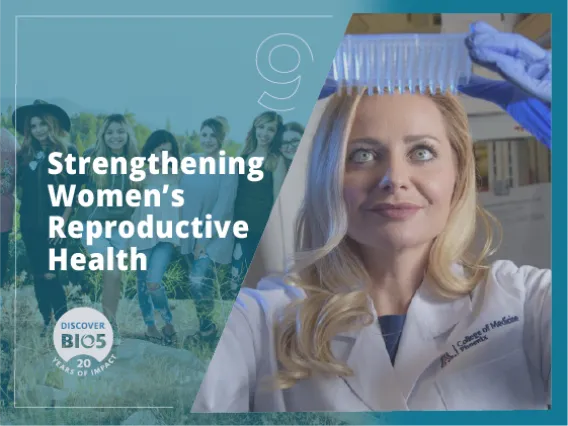
BIO5 researchers are passionate about addressing unique challenges that affect women. Jennifer Barton has invented a novel falloposcope imaging device that will enable earlier detection of ovarian cancer. Melissa Herbst-Kralovetz studies the delicate balance between “good” and “bad” bacteria in the female reproductive tract, with the goal to develop better diagnostics, preventatives, and treatments for sexually transmitted infections, gynecological cancer, and more. Leslie Farland aims to identify patterns of association between endometriosis and other conditions like type 2 diabetes and stroke in order to learn more about the causes and risk factors.
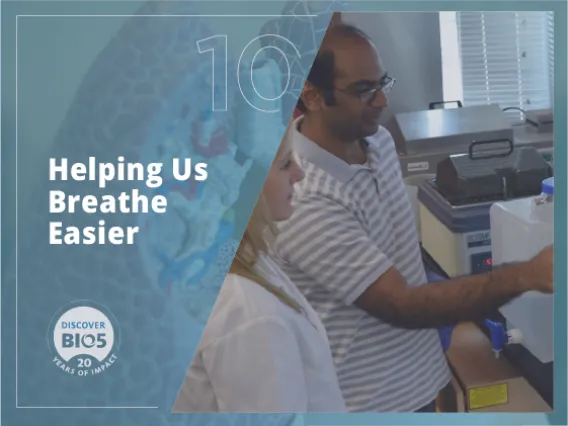
Nearly 37 million Americans suffer from a chronic lung disease. Looking at a combination of genetic and environmental factors, Fernando Martinez, Donata Vercelli, Monica Kraft, Julie Ledford and other BIO5 researchers are studying new ways to prevent, detect, and treat chronic lung diseases, as well as learning more about how exposure to protective bacteria in early life may provide solutions. To inform more personalized treatments, Francesca Polverino is differentiating unique immune system responses associated with COPD versus emphysema.
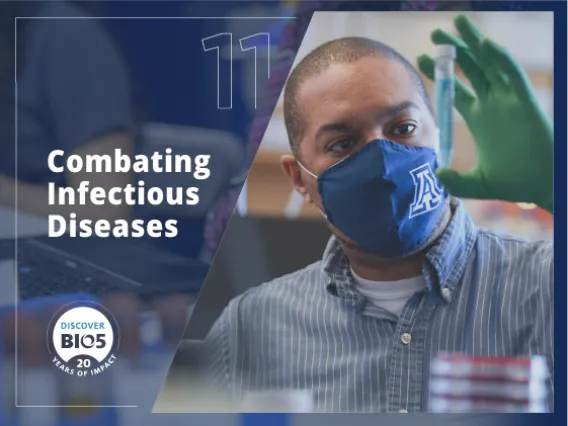
Infectious diseases are the leading cause of death in developing countries and the fuel that ignites challenges like pandemics, and BIO5 researchers aim to develop better prevention, diagnostic, and treatments to decrease the global burden of these diseases. Deepta Bhattacharya merges stem cell biology and immunology to understand the development of white blood cells and devise novel strategies to fight illnesses such as COVID-19, influenza, and Dengue virus. Michael Johnson aims to understand how bacteria sense and interact with metals like copper during the process of infection, with the goal to develop better therapeutics that guard against antibiotic resistance.
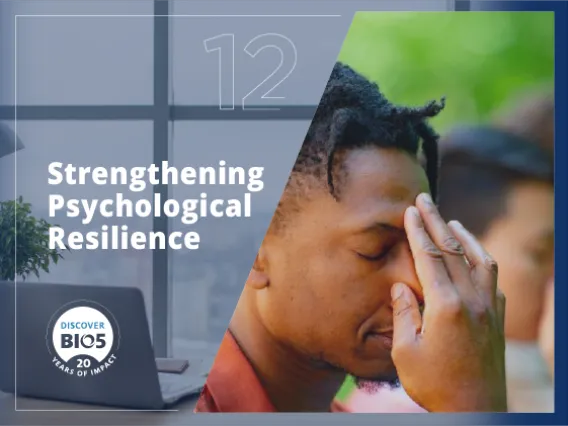
BIO5 researchers know that positive mental and emotional health play a key role in preventing illness, improving mood and productivity, and increasing lifespan. Sleep expert Michael Grandner studies how sleep is essential to enhanced cognitive function, mental health, and athletic performance. John Allen found that yogic breathing improves stress responses in students. Esther Sternberg created a guide for architects to design workspaces that help improve emotional well-being.
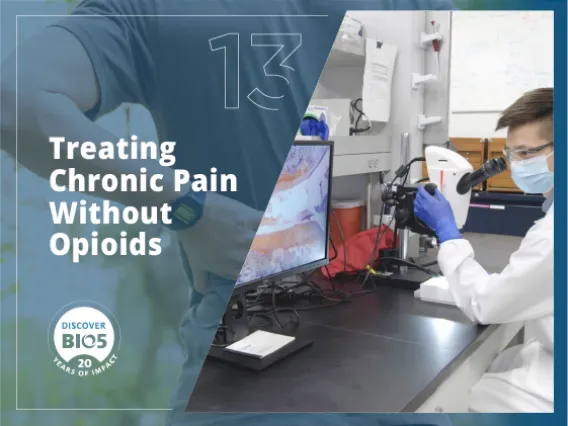
Pain is a normal response to injury – but chronic pain is different, and it’s often poorly managed with habit-forming opioids. Todd Vanderah is leading the UArizona Health Sciences Comprehensive Pain and Addiction Center to address the opioid epidemic by tackling the related issues of substance misuse, chronic pain, and addiction. BIO5 researchers Rajesh Khanna, Vijay Gokhale, and May Khanna are closer to developing a safe and effective non-opioid pain reliever after their discovery of a new compound that regulates a biological channel linked to pain.
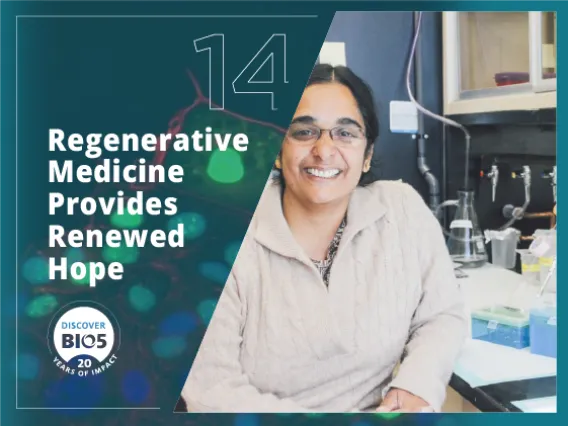
Pak Kin Wong and Donna Zhang manipulate cell form and function to create new tissue and organs, and to repair, restore or replace those damaged by injury or disease. To address treatment limitations for Parkinson’s and other age-related neurodegenerative diseases, Lalitha Madhavan is using innovative patient-derived induced pluripotent stem cell (iPSC) technologies to develop novel therapeutics for individual patients. Marvin Slepian, an innovator of artificial heart valves and ventricular assist devices, has developed and brought to the clinic several tissue-engineered technologies including "smart stents" to improve blood flow.
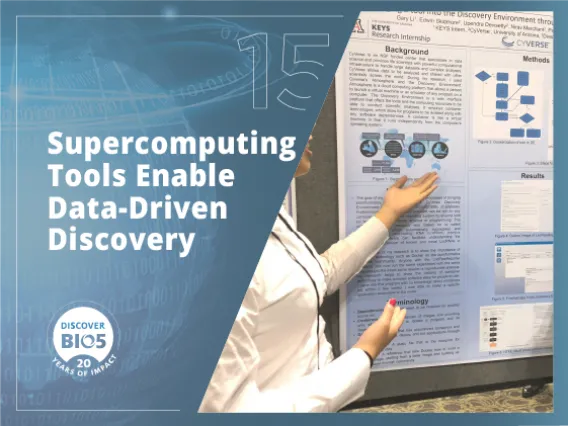
Foreseeing the need to create a cyberinfrastructure that would democratize access to research data, the National Science Foundation (NSF) established the iPlant Collaborative (now CyVerse) at the BIO5 Institute in 2008 with a $50M grant - the largest grant ever awarded by the NSF in the biological sciences, and three times larger than any NSF grant received by the state of Arizona at that time. With a five-year renewal grant in 2013, the federal government clearly endorsed their unprecedented $100M total investment. By enabling data-driven research by providing powerful tools and technologies to handle huge datasets and complex analyses, CyVerse has changed the way we do and teach science.

BIO5 researchers are focused on breaking down barriers that limit access to quality health care. Because traditions are deeply interwoven with the environment for Indigenous peoples, Paloma Beamer uses a culturally anchored approach to assessing health risks and devising interventions for environmental exposures. Sairam Parthasarathy is co-leading an NIH COVID-19 initiative to build trust, increase awareness and education, and promote clinical trial inclusion among underserved populations.

Neurodegenerative diseases like Alzheimer’s lead to a devastating loss of cognitive function and independent living. Roberta Diaz Brinton’s team has developed the first regenerative therapeutic for Alzheimer's disease designed to restore cognitive function in early-stage patients. Ying-hui Chou is integrating the power of traditional MRI technology with transcranial magnetic stimulation to improve memory function and develop personalized, noninvasive treatments for mild cognitive impairment. Matthew Grilli is using a new cognitive test to link how well people remember past events in their lives to early predictions about who is at risk for developing Alzheimer's.

BIO5 scientists are leveraging big data, predictive models, and nanotechnology to further understand the complex processes involved in disease and design patient-specific prevention and treatment strategies to improve health. Jianqin Lu created a nanotherapeutic platform that delivers chemotherapy in a way that makes it more effective against aggressive tumors. Sudha Ram designed a model that used Twitter to predict with 75 percent accuracy how asthma-related tweets, analyzed alongside air quality data, can help predict asthma-related emergency room visits.
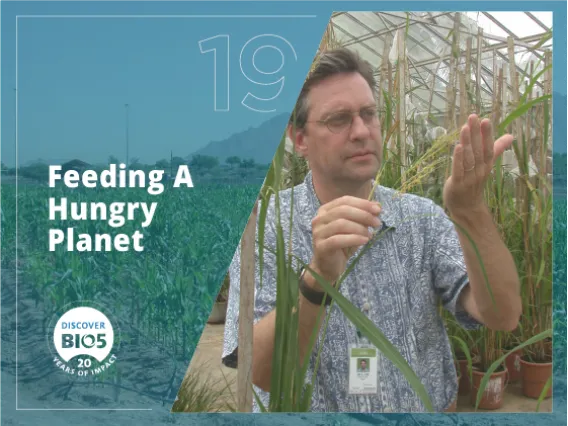
BIO5 researcher Rod Wing and his team in the Arizona Genomics Institute have played a significant role in over 75 plant and animal genome projects, including sequencing the rice and corn genomes. In an attempt to answer how to feed 10-billion people on the planet by 2050, AGI is developing new varieties of crops that are higher yielding and more nutritious, while at the same time have less of an environmental footprint. Their approach involves identifying, understanding, and harnessing the majority of natural variation that is already present in cultivated rice and its wild ancestors, and using that information to create the next generation of green super crops.
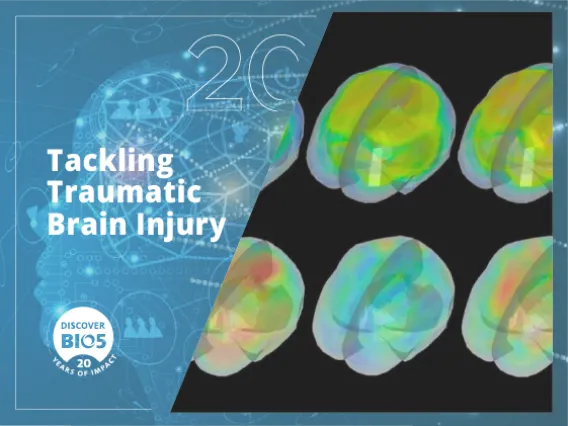
Traumatic brain injury (TBI) is the leading cause of death and disability for individuals under age 44 with an estimated 1.7 million cases occurring in the U.S. every year. TBI dismantles circuits in the brain, leading to short and long-term cognitive dysfunction. Kaveh Laksari utilizes biomechanics to study the underlying processes of TBI and model the injury to aid in prevention and accurate diagnosis. Vignesh Subbian analyzes data gathered from advanced monitoring of brain injury patients to develop methods to better classify TBI patients and predict what might happen next. These efforts will allow clinicians to provide the right care to the right TBI patient at the right time.
